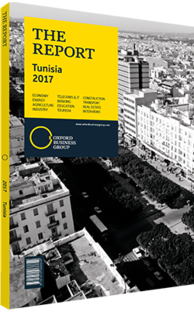Reforms to the car insurance segment in Tunisia
Car insurance is by far Tunisia’s largest line, accounting for 45.7% of total industry premiums in 2015. Premiums for the segment reached TD766.8m (€328.8m), up by 8.5% from the previous year and slightly ahead of an overall insurance market growth rate of 7.9%. Industry figures say the market will continue to expand steadily in coming years. “The country’s fleet of vehicles is growing, which will help the market develop,” Mustapha Kotrane, head of production at Tunis Re, told OBG.
Société Tunisienne d’Assurances et de Réassurances, STAR) is the largest player in the segment with a 2015 market share of 22%, followed by Assurances AMI with 15.7%, Compagnie Méditerranéenne d’Assurances et de Réassurances with 11.8% and MAE Assurance, which had a 10.4% share of the market. No other insurer had a market share in excess of 10%.
Losses
The segment is heavily loss-making in underwriting terms, registering a technical loss of TD49.7m (€21.3m) in 2015, up from TD38.6m (€16.6m) the previous year, though strong financial returns of TD99.6m (€42.7m) meant it nonetheless registered a net technical profit of TD49.9m (€21.4m).
One of the main contributors to poor underwriting results is a high claims rate; car insurance claims accounted for 53.1% of total paid claims in 2015, ahead of the segment’s premium market share of 45.7%. “Tunisia has high rates of auto insurance claims as car accident rates are also very high,” said Rym Gargouri, analyst at Tunisian stock brokerage Tunisie Valeurs. While the country’s road safety profile has improved in recent years, with the number of accidents down 9.4% in 2015, the value of paid claims rose by 10% that year.
Another constraint on profitability is a price cap on the mandatory third-party civil liability insurance that dominates sales in the segment. “The fact that the state currently regulates prices prevents companies from properly pricing risks, which has given rise to widespread underwriting losses,” said Bassem Neifer, analyst at equity research provider Alpha Mena.
Authorities are working to address these concerns. The General Insurance Committee (Comité Générale des Assurances, CGA), the sector’s regulator, in January 2016 raised tariffs for third-party civil liability car insurance by 10% and said it would continue increases until at least 2020. Slim Chaker, then-minister of finance, in July 2016 told local media the government was examining the possibility of liberalising car insurance tariffs, describing losses in the segment as “intolerable”.
Price liberalisation was part of a range of reforms proposed by the industry representative body Fédé ration Tunisienne des Sociétés d’Assurance (FTUSA) to the CGA in 2014, known as contract programme. Lassaad Zarrouk, president of the FTUSA, told local media in late 2016 he hoped the programme would be implemented the following year. Neifer said he too believed pricing in the sector would likely be liberalised in 2017, adding that in such an event companies with foreign partners were likely to be able to better price risk and thus outperform other firms as a result of technical assistance from their partners and access to their risk models.
Database
A development likely to boost the prospects of price liberalisation in the segment is the creation of a new risk registry for car insurance that will allow firms to adjust clients’ insurance premiums based on their claims history. The CGA and FTUSA began working on the database in June 2016. Although as of April 2017 the project had not been completed, industry figures believe the registry will allow insurers to improve their risk management even if prices remain capped.
“Price liberalisation would require companies themselves to take measures such as internal restructuring that would allow them to improve their ability to set their own tariffs, which would take time,” Mohamed Ali Jebira, analyst and partner at Deloitte, told OBG. “However, this database will make it possible in the short term to control the tariffs of the liability insurance price, and in the medium term give indicators that will allow to adjust the tariffs for a possible liberalisation.”
You have reached the limit of premium articles you can view for free.
Choose from the options below to purchase print or digital editions of our Reports. You can also purchase a website subscription giving you unlimited access to all of our Reports online for 12 months.
If you have already purchased this Report or have a website subscription, please login to continue.

